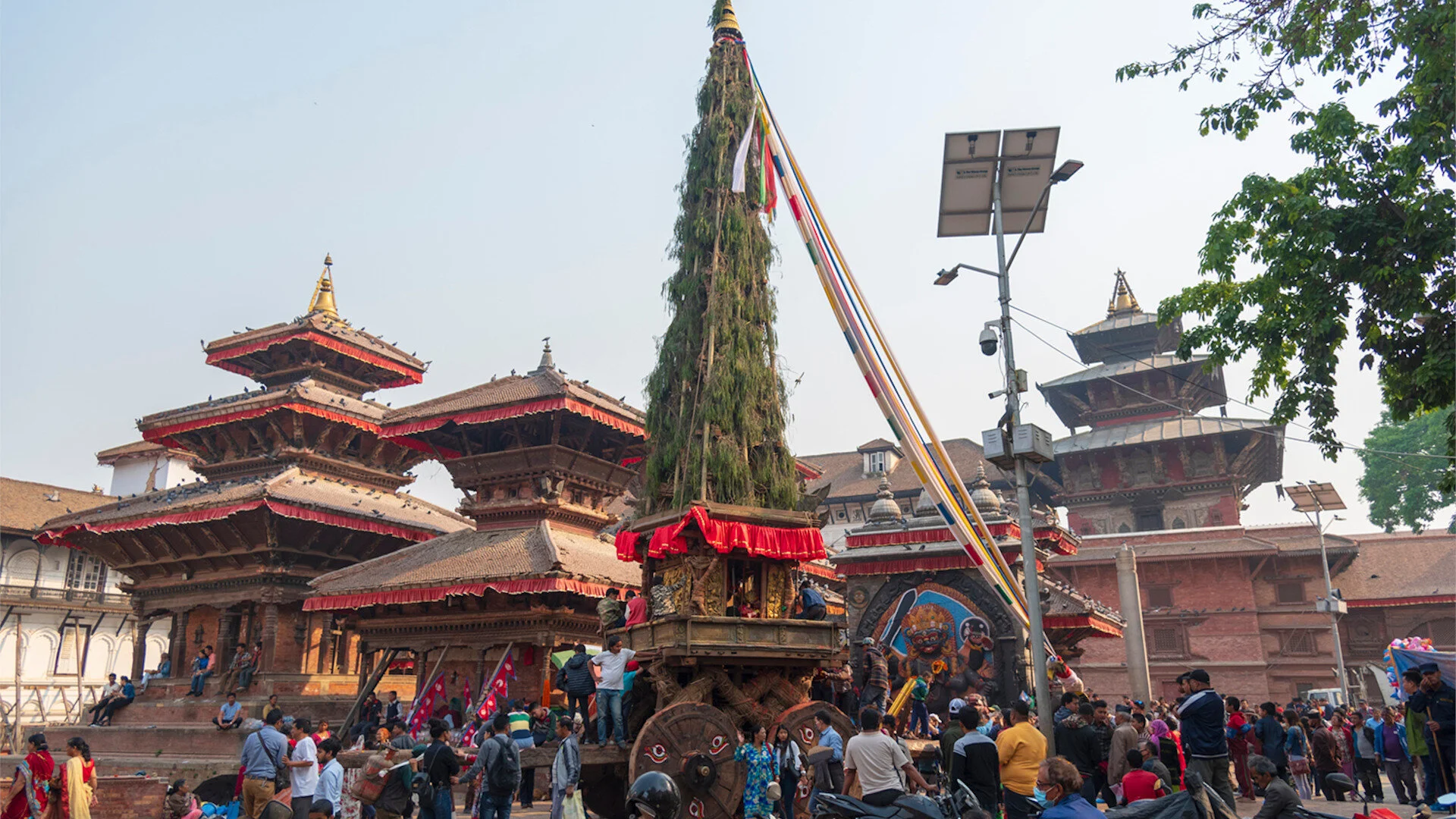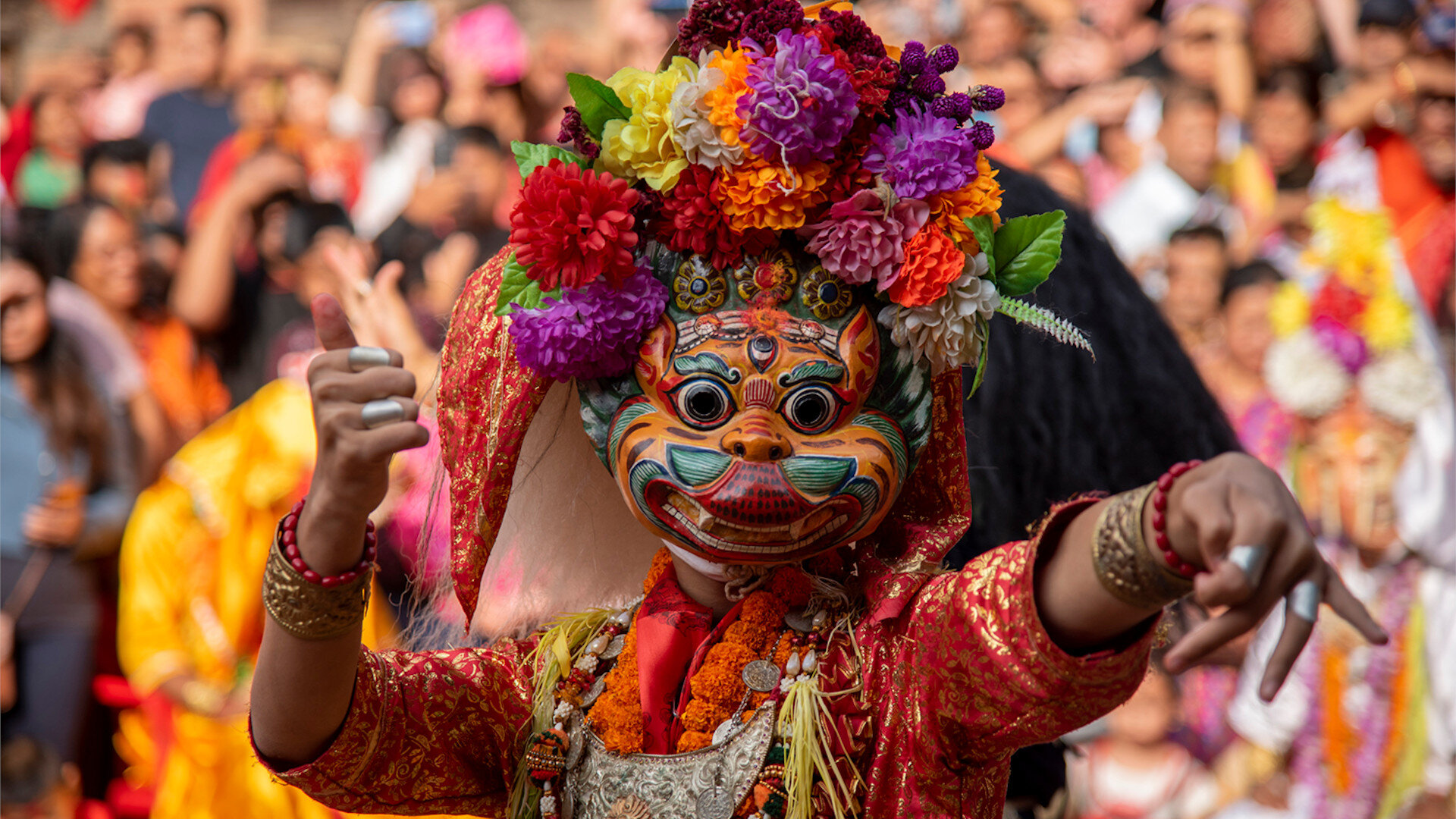With the waning of winter, arrives many enjoyable festivals. one will witness people of all ages and walks of life throwing color at each other, and friends and acquaintances, sometimes even strangers, exuberantly rubbing color powder on one another’s face. Many young men are likely to be high on the day from drinking ‘bhang’ and eating ‘bhang-ko-laddu’ (drink and sweet containing marijuana). Much ahead of the festival, government authorities put out notices through various media warning that unruly behavior will not be condoned on the day of Holi. Security will be high, since brawls often break out between groups of intoxicated revelers.
Till recently (not so much now), you could deduce that Holi was around the corner due to kids throwing small water-filled balloons (lolas) at passersby, particularly young girls, almost a week before the festival day. ‘Anything goes,’ seems to be the watchword of Holi, and in fact, the favorite cry on the day is in Hindi, “Bura na mano, Holi hai!” especially in the Terai, where Holi is celebrated one day after the one in the hills. The phrase means, “Don’t mind, it’s after all Holi!” In other words, it is a festival that permits you to let out steam, within limits, of course.
The story of a female demon “Holika”
Here is the story behind the festival of colors: It is to celebrate the death of a female demon named Holika, who had been ordered by her brother Hiranyakashyapu to kill his son Prahalad. Hiranyakashyapu, through severe meditation, had won the gods’ blessings that he couldn’t be killed by anybody on earth, water, or sky, using whatsoever means, and thus he considered himself to be immortal, above all beings.
So, when he discovers his son worshipping Lord Vishnu, he gets enraged. He orders his sister Holika, who herself has won a blessing to be immune from fire, to grasp Prahalad and jump into an inferno. However, somehow or the other, it is Holika who gets immolated, while the boy remains unharmed. There’s another reason for Holi. It is to celebrate Lord Rama’s return to Ayodhaya after his epic victory over the 10-headed King Ravana of Ceylon, who had abducted his wife Sita, thus starting a war.
Raising ceremonial bamboo
The beginning of the festival, in Kathmandu, is marked by raising the Chir pole (a ceremonial bamboo pole having cloth strips of various colors) at Kathmandu Durbar Square. The story behind this is pretty interesting. Lord Krishna, in his heydays, had a flock of adoring women always around him. They were known as Gopinis (Krishna is also known as Gopi). One day, while the women are taking a bath in a river, he steals their clothes and hangs them on a tree. Well, the chirs (cloth strips) represent the Gopinis’ clothes. The naughty Krishna then declares that he won’t be returning the clothes until they remain submerged for some time, offering prayers to the Sun god.
Oil wicks on a cow dung base are kept lighted at the bottom of the Chir, and ceremonial threads tied around it. The setting up of the Chir heralds the start of the Holi festival. In the same way, its lowering announces the end of Holi. Once lowered, the waiting crowd rushes forward to grab the cloth strips, which are regarded as lucky charms. The Chir pole is then dragged to Tundikhel and burnt. Women throw coconut shells into the bonfire, and people collect the glowing coals and ash, which will be used for purifying their homes. In the Terai, Holi is celebrated as boisterously as in the hills, and in many areas, more so. People invite friends to their homes to enjoy special delicacies. All said and done, Holi is the most colorful festival of all festivals in Nepal, and a time when old grievances are forgotten and forgiven.
POPULAR ITINERARIES
SIMILAR POSTS
0 Comments




































